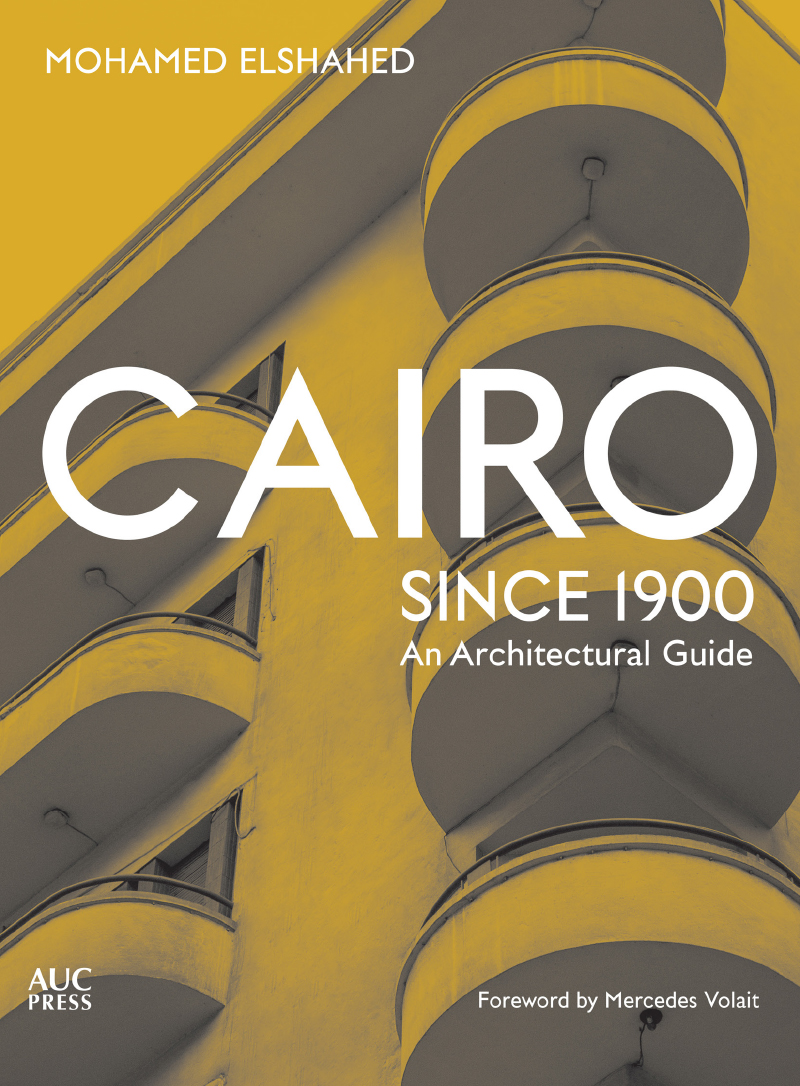Cairo since 1900
Cairo since 1900: An Architectural GuideMohamed ElshahedAUC Press, December 2019Flexicover | 5-1/2 x 7-1/2 inches | 410 pages | 330 illustrations | English | ISBN: 978-9774168697 | $39.95PUBLISHER'S DESCRIPTION: The city of a thousand minarets is also the city of eclectic modern constructions, turn-of-the-century revivalism and romanticism, concrete expressionism, and modernist design. Yet while much has been published on Cairo’s ancient, medieval, and early-modern architectural heritage, the city’s modern architecture has to date not received the attention it deserves. Cairo since 1900: An Architectural Guide is the first comprehensive architectural guide to the constructions that have shaped and continue to shape the Egyptian capital since the early twentieth century. From the sleek apartment tower for Inji Zada in Ghamra designed by Antoine Selim Nahas in 1937, to the city’s many examples of experimental church architecture, and visible landmarks such as the Mugamma and Arab League buildings, Cairo is home to a rich store of modernist building styles. Arranged by geographical area, the guide includes entries for more than 220 buildings and sites of note, each entry consisting of concise, explanatory text describing the building and its significance accompanied by photographs, drawings, and maps. This pocket-sized volume is an ideal companion for the city’s visitors and residents as well as an invaluable resource for scholars and students of Cairo’s architecture and urban history. Mohamed Elshahed is a researcher, curator, and specialist on architecture, design, and material culture in Egypt. He holds a PhD from New York University and an MA from MIT. He is the curator of the Modern Egypt Project at the British Museum and founder of Cairobserver.com. REFERRAL LINKS: dDAB COMMENTARY: Just over a year ago I was fortunate enough to be invited on a junket for a conference taking place in Cairo. Specifically, the 6th LafargeHolcim Forum, Re-materializing Construction (I recently reviewed the conference catalog), was held at the American University of Cairo's campus in New Cairo, located about 20 miles east of AUC's early 20th-century home at Tahrir Square. That setting made my first and so far only experience of Cairo a strange one, full of bus rides, metal detectors, more bus rides, and more metal detectors. Most of the time we were shuttled between the hotel and the campus, though one day consisted of field trips and I opted for the one to the city's historical center – the antithesis of New Cairo – and the Pyramids in Giza. Those areas ended up having just as much security, but the army escort our bus received that day made it clear this was not the typical visitor's journey through the Egyptian capital. When I first heard about Mohamed Elshahed's Cairo since 1900, my first thought was that it was too bad it was too late for my trip. But as I type the above, I wonder now if the excellent guidebook would have actually been useful "on the ground." For sure, Elshahed's book capably paints a picture of modern Cairo and orients the reader within the sprawling city along the Nile, but I'm not sure about using the guidebook to visit any of the 226 buildings/projects between its covers. Take, for instance, the AUC New Cairo Campus, which is included in the book's final chapter, "Outskirts." It was laid out just over a decade ago by Abdelhalim CDC and Sasaki Associates and has building designed by Ricardo Legorreta, Hardy Holzman Pfeiffer, and Ellerbe Beckett. Having wandered about campus between sessions, I would recommend a visit to anyone in the area, but the layers of security at the entrances makes me thinks such a thing would be nearly impossible. I'm guessing the same restrictions apply to other projects in the book, although I'll grant that most of them are individual buildings that can be glimpsed from the street. For the above reason, I think Cairo since 1900 functions best as an armchair guide to the city's modern architecture, though the same can also be said because of Elshahed's inclusion of proposals that will never happen. Zaha Hadid's Nile Tower from 2007 is in the book but described in "would have beens" language, while the nearby Maspero Triangle masterplan from Foster + Partners might happen but is unlikely. These kinds of projects add a layer to the architectural guidebook; it melds Cairo's built reality and its ambitions, its unrealized dreams. Architecturally, many of the buildings in the book are unexceptional. But as Mercedes Volait writes in the foreword, "Mohamed is not trying to force Cairo into the canon of avant-garde architecture ... [he shows] that the city possesses a genuine modern built landscape that has value per se." As accumulated, the buildings give a vivid impression of a bustling city that, I'll admit, in many ways exceeds the sight of it from a bus window. SPREADS:

Cairo since 1900: An Architectural Guide
Mohamed Elshahed
AUC Press, December 2019
Flexicover | 5-1/2 x 7-1/2 inches | 410 pages | 330 illustrations | English | ISBN: 978-9774168697 | $39.95
PUBLISHER'S DESCRIPTION:
SPREADS:










